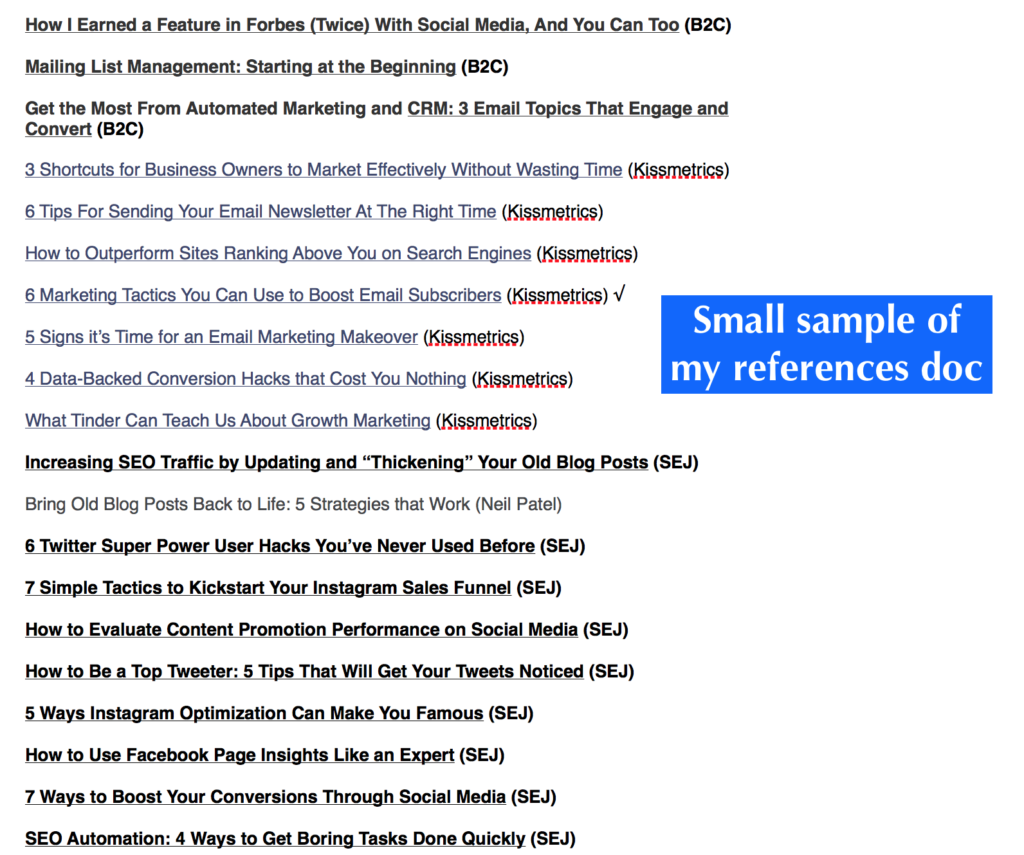
This is a guest contribution from Lori Wade
Did you know that companies that excel at drips generate 80% more sales at 33% lower costs? That’s the power of irresistible drip campaign emails. These statistics were published in 2016 by MarTech website – and now the numbers are probably even more impressive. As you see, drip email matter a lot – and affect marketing campaigns greatly. But, of course, you need to know how to write them properly in order to achieve such result.
So if you want to make your drip campaign emails more effective and impressive, here’s are 11 tips that will help you do so.
#1: Find Out What Your Goal Is
Sure, you probably know what you plan on accomplishing with the help of a drip campaign – but is your goal as detailed and specific as it could be? If not, take some time to make it into one, adding more details, numbers, and deadlines. Your goal needs to be measurable if you want to achieve it.
#2: Keep The Fundamentals In Mind
The subject line is extremely important for all kinds of emails – and drip ones are no exception. Here are some questions you need to ask yourself before writing the subject line for your new campaign:
- Does the message hold value to the readers?
- Do the readers understand clearly what it promised to them?
- Does the message look impressive and trustworthy?
- Does the message inspire the readers to open and read an email right now?
Answering these questions will help you craft a truly compelling subject line.
#3: The Timing & Frequency Matter

Any drip campaign can be customized – and you can make the most out of it. The timing and the frequency are able to play a huge part in your campaign’s success. And while they can differ, depending on the niche and the type of campaign, there still are some general rules that can apply to your campaign.
According to them, Tuesday is the best day for starting an email campaign, while 10 and 11 AM are the best time for that. But, of course, you can still experiment to find out the best day and time for your company specifically.
The frequency is another tricky part here. If you email your clients too often, this could annoy them. However, if you don’t email often enough, they might lose interest in your company’s goods or services.
Probably, the safest approach to emails is to mail them once a week – or to stick to minimum six days between them (which often turns out to be pretty much the same in practice).
#4: Make The Message Compelling
Once you figured out the basics, it’s time to move to the main part – writing the email itself. In order to do this in the best way possible, ask yourself the following questions:
– What differs your content from the others’ one?
– Why should the recipients read your message?
– How is this message going to make their lives better?
Answering them will help you set a tone for the message before you move on to the writing process.
#5: Identify Yourself

If you want your email to look trustworthy and personal, you’ll need to identify yourself properly. Either do that in the «From» field, stating the name of your company (or your own one) or start the message with introducing yourself.
#6: Place The Most Important Information First
Even if the readers open your email, this still doesn’t mean they’ll continue reading it. People are mindful of their time and picky about the content these days – and that’s the reason why you should move right to the point after introduction.
Not only make your email informative – make sure that you place the most useful information first. This way the readers will see the point right away and will be able to decide whether they want to continue reading this letter or not basing on the information they see.
#7: Don’t Make Every Email Urgent
Sure, urgency can play a role in email marketing: people will most likely open an email when they see its urgent. However, the more often you use that trick, the fewer times it will work. Instead of catching the readers’ attention with such tricks, try to make every email interesting and valuable for them. And emphasize the urgency only when it’s really necessary.
#8: Keep The Spam Checking Software In Mind.

While we know that using some words in emails can trigger spam filters, not all of us actually understand which words could be used and which couldn’t. Email services can help you with this: if you’re using one of the reputable ones, you are always able to use their spam checking software or to install the appropriate add-on.
#9: Keep It Short
Even if you do feel like you need to provide some additional data besides the main one (for example, add the details of an upcoming sale, explain the terms and conditions of the lottery, offer some argumentative topics for essays, etc.), you should be careful and mindful about that. Sometimes it’s better to include a link to additional information than put it in your email, making it look even bigger and therefore more time-consuming to read.
#10 Consider Adding A P.S.
Adding a P.S. to your email might not seem like a good idea these days – after all, they’ve been used in written emails and might look too old-fashioned. But it’s actually a good thing to include in your writing.
Why so? Besides it makes your email look more personal (and sometimes a bit nostalgic), it also ensures that your readers will remember a certain information. You see, our mind tends to remember the first and the last lines of writing, be it an email or a book. Adding a «P. S.» to the last line could drive the attention towards it, even more, ensuring your readers won’t forget something you want to remind them.
#11: Measure The Results

Sure, this might seem like a pretty obvious tip, but it’s not the most obvious measuring I’m talking about. It matters a lot as well, but what I’m saying is that you also should consider measuring the total traffic the drip campaign drives to a certain page – and look at the conversions as well.
Of course, achieving the desired result with the help of drip campaigns isn’t easy. Years ago people found every email interesting – but these days are long gone. Now, when people are overwhelmed with content, you have to work insanely hard to make each of your emails count.
The good news is that once you build that reputation and earn the initial trust of your clients, it will become much easier. If you prove to them that your emails are useful and interesting, they’ll start reading it – even not the best of them. So good luck with making your emails the ones people would want to read!
 Lori Wade is a content writer who is interested in a wide range of spheres from education and online marketing to entrepreneurship. She is also an aspiring tutor striving to bring education to another level like we all do. If you are interested in writing, you can find her on Twitter or Google+ or find her on other social media. Read and take over Lori’s useful insights!
Lori Wade is a content writer who is interested in a wide range of spheres from education and online marketing to entrepreneurship. She is also an aspiring tutor striving to bring education to another level like we all do. If you are interested in writing, you can find her on Twitter or Google+ or find her on other social media. Read and take over Lori’s useful insights!




